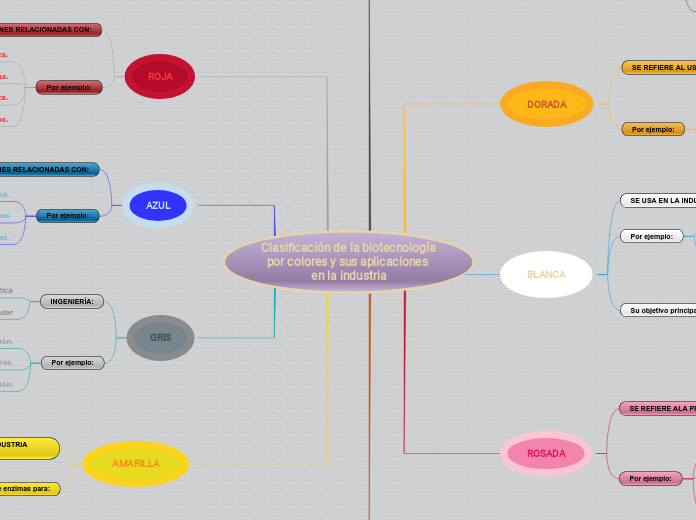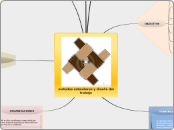Clasificación de la biotecnología por colores y sus aplicaciones en la industria
The Solar System is the gravitationally bound system of the Sun and the objects that orbit it, either directly or indirectly. Of the objects that orbit the Sun directly, the largest are the eight planets, with the remainder being smaller objects, the dwarf planets, and small Solar System bodies.
AMARILLA
Saturn is known most for its rings.
Galileo Galilei first thought it was an object with three parts: a planet and two large moons on either side.
Not knowing he was seeing a planet with rings, the stumped astronomer entered a small drawing — a symbol with one large circle and two smaller ones — in his notebook.
The rings are made of ice and rock and scientists are not yet sure how they formed. The gaseous planet is mostly hydrogen and helium.
Uso de enzimas para:
A planet's day is the time it takes the planet to rotate or spin once on its axis.
Write down Saturn's day measured in Earth days.
La producción y procesamientos de los alimentos.
USO DE ORGANISMOS EN LA INDUSTRIA ALIMENTARIA:
Biomuléculas.
Vivos.
GRIS
Uranus is an oddball. It has clouds made of hydrogen sulfide, the same chemical that makes rotten eggs smell so foul.
It rotates from east to west like Venus. Its tilt causes extreme seasons that last 20-plus years, and the sun beats down on one pole or the other for 84 Earth-years at a time.
Methane in the atmosphere gives Uranus its blue-green tint. It also has 13 sets of faint rings.
Uranus has 27 moons that we know of. Five of the moons are large and the rest are much smaller.
Name these 5 moons.
Limpieza de contaminación.
Biofiltros.
Biorremedación.
INGENIERÍA:
A planet's day is the time it takes the planet to rotate or spin once on its axis.
Write down Uranus's day measured in Earth days.
Molecular
Genética
AZUL
Neptune is about the size of Uranus and is known for supersonic strong winds.
Neptune is far out and cold.
The planet is more than 30 times as far from the sun as Earth.
Neptune was the first planet predicted to exist by using math, before it was visually detected. Neptune is about 17 times as massive as Earth and has a rocky core.
How long does it take for Neptune to go around the sun?
Biodiesel.
Nuevos cosméticos
Nuevos fármacos.
Ambientes marinos y acuáticos.
ROJA
It was once considered a planet but in August 2006 the International Astronomical Union (IAU) downgraded the status of Pluto to that of “dwarf planet.”
Pluto is unlike other planets in many respects. It is smaller than Earth's moon; its orbit is highly elliptical.
It's a cold, rocky world with a tenuous atmosphere. Pluto is a very active ice world that's covered in glaciers, mountains of ice water, icy dunes, and possibly even cryovolcanoes that erupt icy lava made of water, methane or ammonia.
The dwarf planet Pluto has five moons.
Name these moons.
Diagnósticos.
Huella génetica.
Vacunas.
Terapia génica.
APLICACIONES RELACIONADAS CON:
A planet's day is the time it takes the planet to rotate or spin once on its axis.
Write down Pluto's day measured in Earth days.
La salud humana.
MARRÓN
Jupiter is a giant gas world that is the most massive planet in our solar system.
Its swirling clouds are colorful due to different types of trace gases.
And a major feature in its swirling clouds is the Great Red Spot, a giant storm more than 10,000 miles wide. It has raged at more than 400 mph for the last 150 years, at least.
Jupiter has a strong magnetic field, and with 75 moons, it looks a bit like a miniature solar system.
Desarrollando y produciendo:
How long does it take for Jupiter to go around the sun?
Fármacos.
vacunas.
UTILIZADA EN:
A planet's day is the time it takes the planet to rotate or spin once on its axis.
Write down Jupiter's day measured in Earth days.
La veterinaria.
ROSADA
Mars is a cold, desert-like place covered in dust. This dust is made of iron oxides, giving the planet its iconic red hue.
Mars shares similarities with Earth: It is rocky, has mountains, valleys and canyons, and storm systems ranging from localized tornado-like dust devils to planet-engulfing dust storms.
How long does it take for Mars to go around the sun?
Bioseguridad de los procesos los que interviene algún organismo vivo o alguna biomolécula obtenida de ellos.
Propiedad intelectual.
Patentes.
SE REFIERE ALA PROPIEDAD:
Bioseguridad en biotecnología.
Intelectual.
BLANCA
Earth is a water world, with two-thirds of the planet covered by oceans.
It's the only world known to harbor life.
Earth's atmosphere is rich in nitrogen and oxygen.
Its name originates from 'Die Erde,' the German word for 'the ground.'
Earth may once have had two moons, nowadays it has just one.
Su objetivo principal es:
How long does it take for Earth to go around the sun?
Generen menos desechos durante su producción a través del uso de células y enzimas.
Que consuman menos energía.
La creación de productos fácilmente degradables.
A planet's day is the time it takes the planet to rotate or spin once on its axis.
Write down the Earth's day in hours.
Bioplasticos.
Biopricesos.
SE USA EN LA INDUSTRIA DE:
La MEJORA de procesos industriales
DORADA
Venus is Earth's twin in size and has no moons.
Its surface has various mountains and volcanoes. Because of its thick, toxic atmosphere that's made of sulfuric acid clouds, Venus is an extreme example of the greenhouse effect. The average temperature on Venus' surface is 900 F (465 C).
Venus spins slowly from east to west, the opposite direction to most of the other planets.
The Greeks believed Venus was two different objects — one in the morning sky and another in the evening. Because it is often brighter than any other object in the sky, Venus has generated many UFO reports.
How long does it take for Venus to go around the sun?
Nanoparticulas.
Nanorobots.
El diseño de drogas "in silico".
SE REFIERE AL USO DE HERRAMIENTAS COMO:
Nanotecnología.
Bioinformáticas.
VERDE
Mercury is the smallest, only a little bit larger than Earth's moon. Mercury has no moon.
It experiences dramatic changes in its day and night temperatures: Day temperatures can reach a scorching 840 F (450 C), which is hot enough to melt lead. Meanwhile, on the night side, temperatures drop to minus 290 F (minus 180 C).
It also has a very thin atmosphere of oxygen, sodium, hydrogen, helium, and potassium and can't break-up incoming meteors, so its surface is pockmarked with craters, just like the moon.
Por ejemplo:
A planet's day is the time it takes the planet to rotate or spin once on its axis.
Write down Mercury's day measured in Earth days.
Biopesticidas.
Biofertilizantes.
GMO.
Mejoramiento de plantas.
APLICADA A LOS PROCESOS:
Our Solar System has eight “official” planets which orbit the Sun.
Each planet is at a different distance from the sun. Name its position.
Agrícolas.









